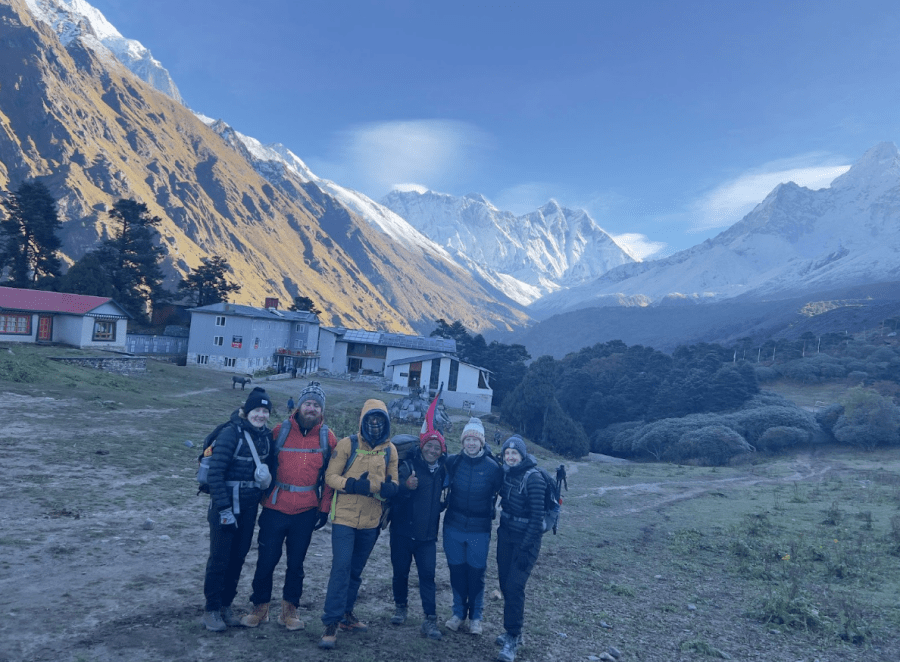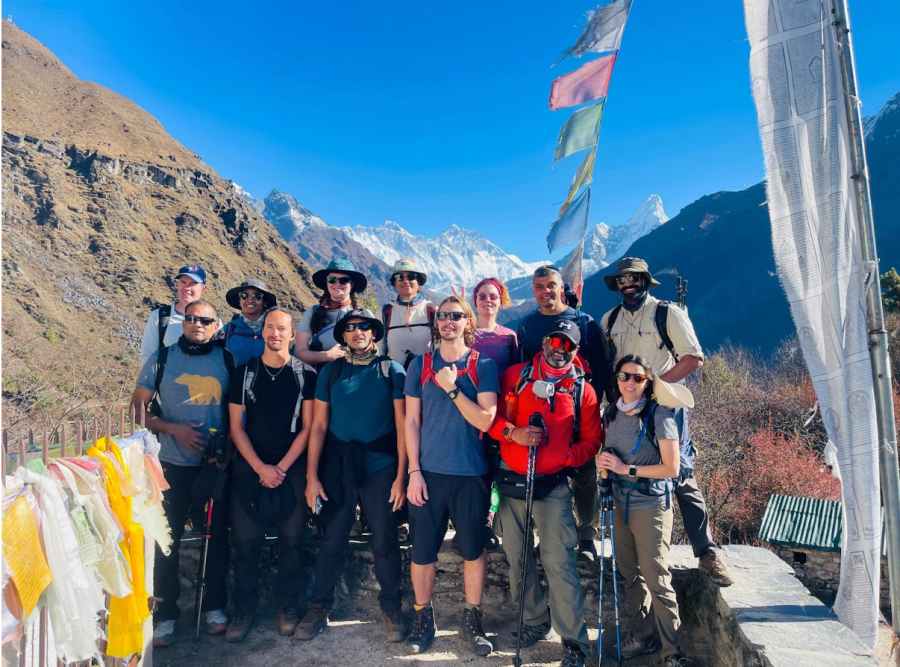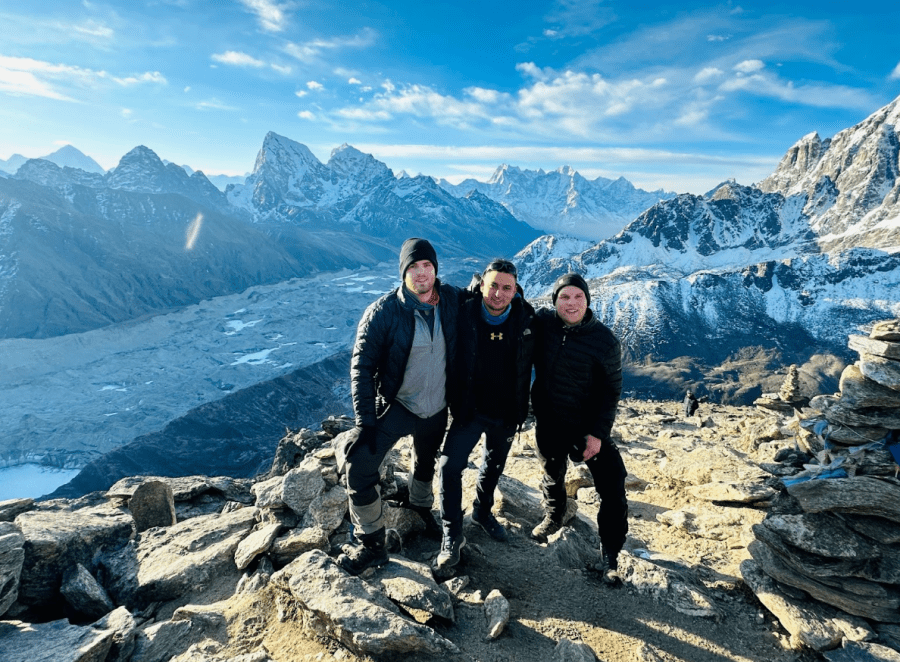8 Defining Experiences on the Everest Base Camp Trek: An Expert High-Altitude Guide
Contents
The Everest Base Camp Trek is a structured high-altitude route through Nepal’s Khumbu region, where trekkers move gradually from forested lower valleys into exposed alpine terrain surrounding the highest peaks on earth.
Rather than a random hiking challenge, it is a clearly engineered ascent profile with built-in acclimatization stops, proven overnight elevations, and an established teahouse system that supports the physical and logistical rhythm of the journey.
For field-verified guidance, altitude planning insight, and authoritative route experience, refer to the Everest Base Camp Trek with Nepal Hiking Team
Below are eight defining moments that characterize the standard route to Base Camp, explained with practical clarity for trekkers planning their own ascent.
1. The Lukla Flight: A Sharp Transition Into High Country
Many journeys begin with a short flight from Kathmandu or Ramechhap to Lukla (2,860m). This transition is not only geographic—it is psychological.
In 20/30 minutes, trekkers shift from urban Nepal to the Sherpa world of the Khumbu. The first trekking stage leads to Phakding in 3–4 hours, mostly descending along the Dudh Koshi River.
Most airlines enforce weight limits, and weather variability often causes delays, making a buffer day a smart inclusion for safe planning.
2. Namche Bazaar: The Altitude Threshold
Namche Bazaar (3,440m) is a major acclimatization checkpoint. The ascent to Namche is often the first time trekkers truly feel altitude, particularly on the final climb after crossing the Hilary Suspension Bridge. Because Namche sits at a critical elevation, most itineraries include two nights here.
Side hikes commonly include the Sherpa Cultural Museum and the hike to Hotel Everest View, which lifts trekkers above 3,800m without sleeping at that altitude—an ideal acclimatization method.

3. Tengboche Monastery: Stillness at Elevation
The hike to Tengboche (3,867m) features one of the route’s most scenic traverses, with Ama Dablam dominating the skyline. The monastery at Tengboche is the spiritual center of the Khumbu. Those who arrive at the right time may attend a puja ceremony, experiencing the sound of chanting set against snow-covered Himalayan peaks.
Some trekkers stay below in Deboche, where accommodation is quieter and slightly more sheltered in forest cover.
4. The Sherpa Legacy: Living Mountain Culture
From Lukla to Dingboche, trekkers pass through culturally rooted Sherpa settlements such as Monjo, Khumjung, Pangboche, and Dingboche.
Mani walls, chortens, and prayer flag-lined trails reflect centuries of Buddhist heritage adapted to high-elevation living.
Walking clockwise around sacred structures, spinning prayer wheels respectfully, and observing silence inside monasteries help maintain meaningful cultural etiquette. Guides from Nepal Hiking Team often explain historical context and local customs, deepening these cultural encounters.
5. Khumjung Village: Heritage on a High Plateau
Khumjung (3,780m) offers a glimpse of Sherpa life before modern trekking reshaped the region. Hillary School remains an active institution, supporting local education.
The Khumjung Monastery, known for the preserved “yeti scalp,” draws curious visitors. The stone-built houses and agricultural settlements create a grounded sense of daily life in the mountains.
6. Kala Patthar: The True Everest Panorama
Kala Patthar (5,555m), climbed from Gorak Shep, delivers the most direct and unobstructed view of Everest. The ascent is steep and oxygen-thin, typically requiring 2–3 hours. Many trekkers choose sunrise, when the air is still, and light reveals the summit face of Everest alongside Pumori, Lhotse, and Nuptse. Cold temperatures and high wind exposure require warm layers and proper headgear.
7. Everest Base Camp: The Expedition Frontier
The trek from Gorak Shep to Base Camp (5,364m) travels across rocky glacier moraine, where the slow movement of the Khumbu Glacier shapes the terrain. During spring climbing season, the area fills with tents and logistical staging for summit expeditions.
In other seasons, it is quieter—but always symbolic. Standing here connects trekkers with the legacy of climbers who pushed higher into the death zone above.
8. The Gokyo Lakes Extension: A Quieter High-Altitude Option
A scenic variant branches toward the Gokyo Lakes through Dole and Machhermo, ultimately reaching Gokyo’s turquoise water basin at nearly 4,800m. Gokyo Ri (5,357m) offers an exceptional panorama of Everest, Cho Oyu, Makalu, and the largest glacier in Nepal—the Ngozumpa.
Trekkers sometimes cross Cho La Pass (5,420m) to rejoin the main route near Lobuche, adding challenge and solitude to their itinerary.
Practical High-Altitude Toolkit
Pace yourself with intention. Take acclimatization days seriously. Drink 3–4 liters of water daily. Focus meals on warm carbohydrates. Break in your boots well before departure.
Protect electronics and skin from wind and UV. Most importantly, descend immediately if altitude symptoms intensify—safety outranks summit ambitions.
Final Insight
The Everest Base Camp Trek is best understood as a controlled ascent through layered Himalayan environments—valley, forest, ridge, and glacier—rather than a linear hike to a single endpoint.
Progressing with awareness of elevation, cultural respect, and environmental responsibility transforms the experience from touristic sightseeing into meaningful mountain immersion.
This perspective, reinforced by long-season guiding experience, remains central to the approach Nepal Hiking Team encourages on the trail.
More Stories
- Why Families Are Ditching Hotels for Vacation Rentals
- Snowboarding in Gulmarg | Best Time, How to Reach & More
- A City for Kids: What Every Parent Needs to Know About KidZania Kuala Lumpur
- 7 Must-Visit Destinations in Thailand | The Happy Trip
- Bangkok Airport Transfer Guide for First-timers: Smooth Arrivals from BKK and DMK
- TUP Visayas Teambuilding at Camp Learning Talisay
- An Overnight Stay at Suryanelli Camp, Munnar
- Ilocos Quick Tour, Part 6: Cape Bojeador Lighthouse to Bangui Windmills
- FOREST CAMP NATURE RESORT | VALENCIA
- ONE DAY SALE | CEBU PACIFIC





